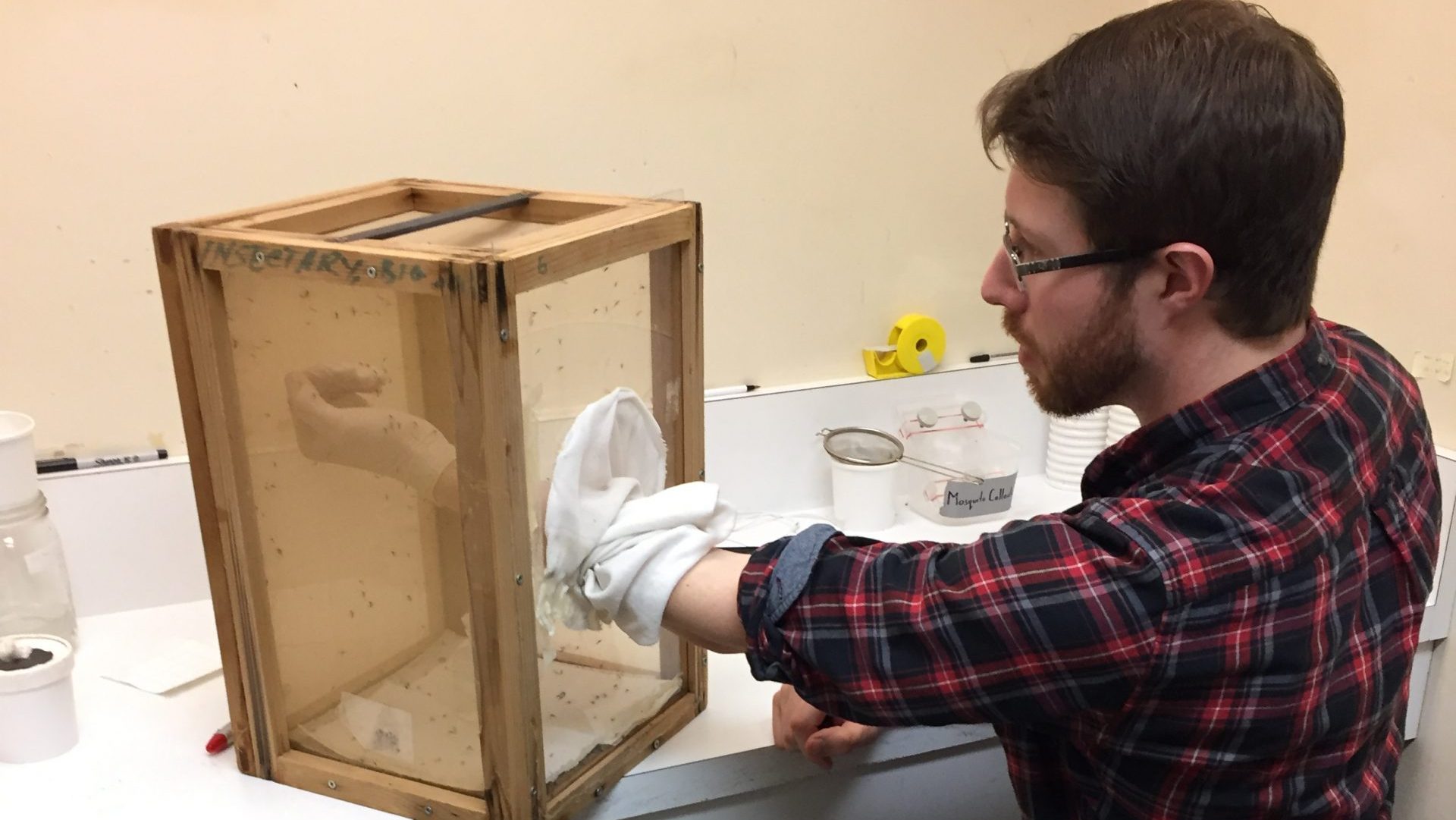
1 Mosquito, 2 Mosquito . . .
This article was made possible thanks to support from the Environmental Awareness Fund. Engage and educate yourself in this 10-part blog series, about Yukon Biodiversity.
10 minute Read plus 3:47 minute video. Banner image photo credit: John Borden.
Mosquitoes: the blood-sucking embodiment of tinnitus. Let’s talk about them. If you are a Yukon resident, I’m sure you are painfully aware that our triangle shaped territory plays host to a truly astonishing number of these whining winged menaces. They rise from their slumber in early spring before the ice has even left the lakes to make all your outdoor activities a little bit more annoying. And itchy.
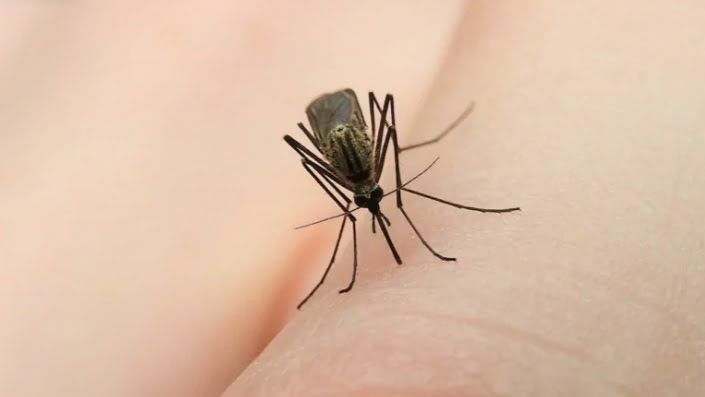
Photo Credit: Dan Peach
Mosquito evasion is a popular summer pastime here in the North so it might seem wild that people would actively seek out mosquitos but that’s the case for many entomologists who go out and willing get bitten by these bugs for science. Dr. Dan Peach from the University of British Columbia recently conducted a mosquito study in the Yukon which identified thirty odd different species of mosquitos including a few that have never been recorded in the territory before!
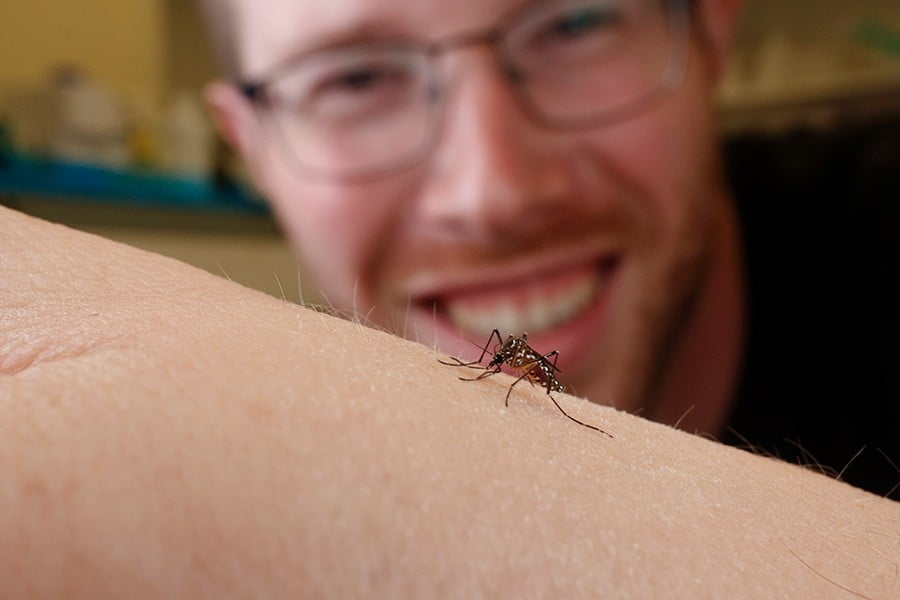
Dan Peach, a PhD candidate in SFU’s Department of Biological Sciences, feeds a mosquito. Photo Credit SFU News.
Researchers use the shape and relative size of a mosquito’s body parts to identify which type it is as well as scale patterns, colour, and hairs. Obviously, identifying these traits on an insect that could comfortably hang out on a dime isn’t easy. Mosquito identification usually requires a microscope, but experienced researchers can identify different species with the naked eye if the mosquito is holding still. It’s a weird party trick but you could get a lot of mileage out of it during a Yukon summer.
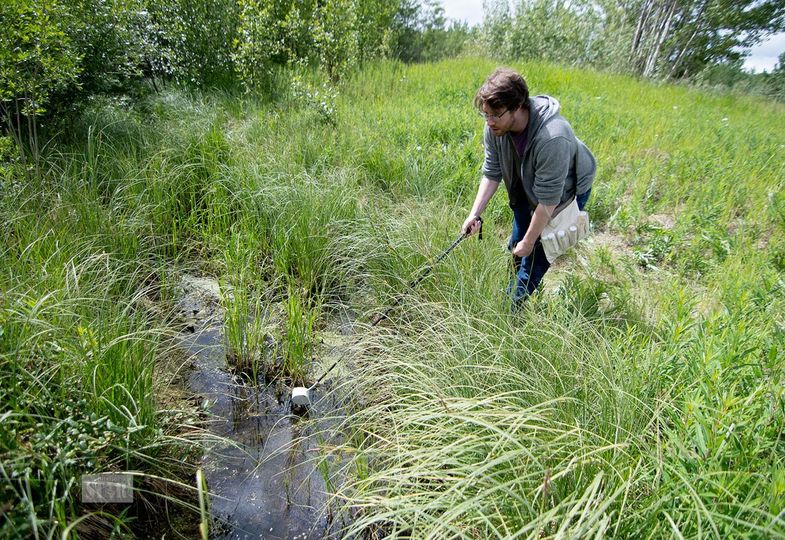
In his studies, Peach has had to be bitten by mosquitos more than 100,000 times. In the works for him is a peer-reviewed guide to Yukon mosquitos. This photo was taken during Yukon Wildlife Preserve-hosted Yukon Bioblitz in summer 2020. Photo Credit: Vince Federoff, Whitehorse Star
The Yukon actually has a long a long history of mosquito research; the first formal record of a mosquito collected in the territory was in 1904. That being said, mosquito surveys aren’t frequent. Before Dr. Peach’s survey, the last mosquito collecting spree was conducted in the early ‘70s. Now you may be asking yourself, “why oh why would anyone want to survey mosquitoes?”
Just like any survey related to biodiversity, it’s important for understanding and monitoring our local ecosystems and improving our understanding of our planet as a whole. Just because something is horrible and bitey doesn’t mean it isn’t ecologically significant and interesting. For example, you may or may not know that only female mosquitoes drink blood while males stick to a diet of plant nectar. That’s right, mosquitoes are pollinators just like bees, bats, butterflies, and… other creatures whose names may or may not start with B. Female mosquitoes also drink plant juice but they do need additional protein to produce eggs and that’s where the blood portion of their diet comes in.
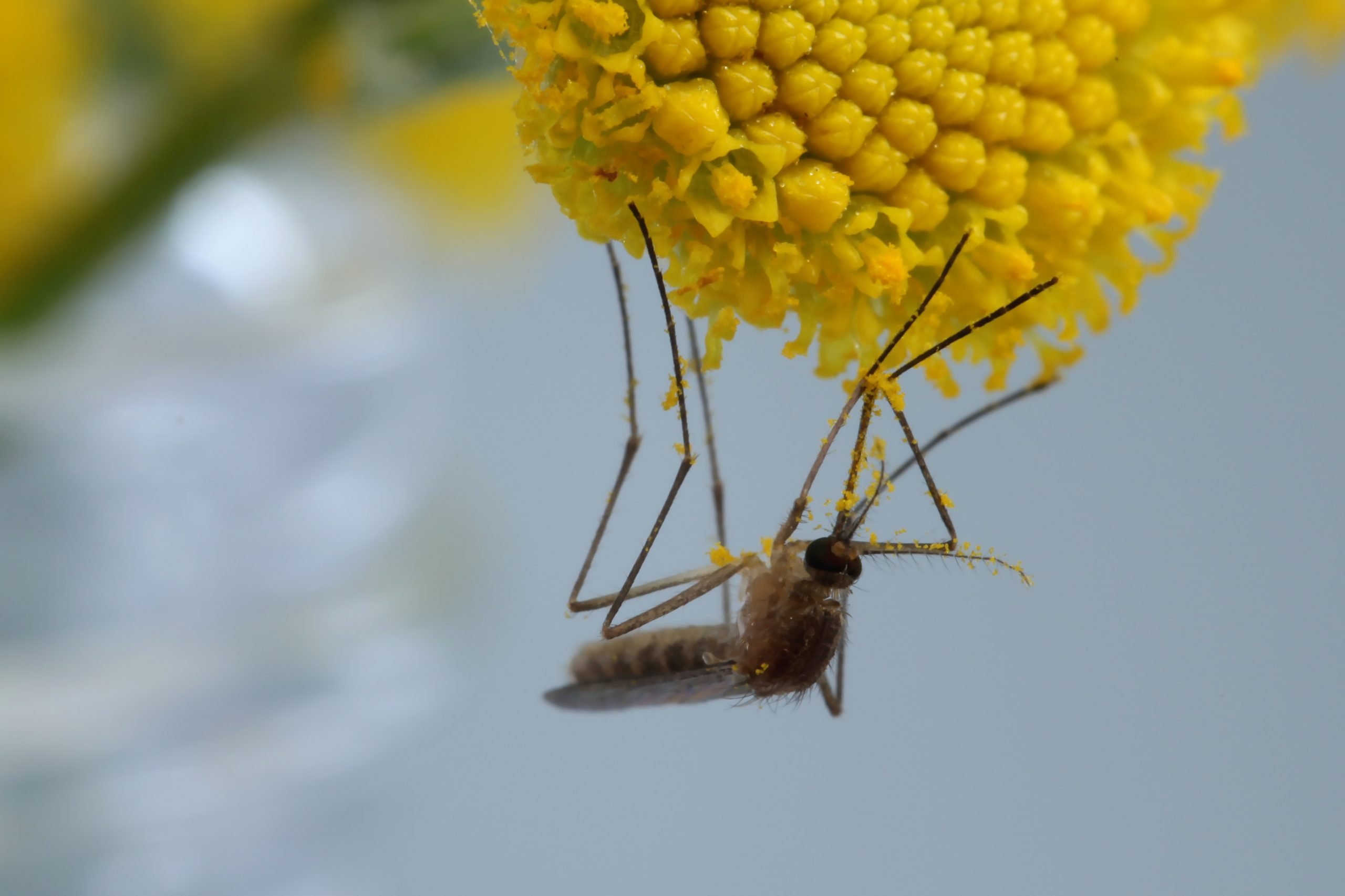
A female Culex pipiens cleans tansy pollen from her proboscis. Photo Credit Mike Hrabar.
Because there is such a diverse array of mosquitoes in the Yukon, I’m not going to get into all of them here (if you want the complete list of every type of mosquito identified in the Yukon, check out Dr. Peach’s mosquito guide for all your mozzie needs coming soon). Instead, I’d like to offer you a sampler pack of what the Yukon mosquito community has to offer starting with my personal favourite, Culex territans. When you’re being eaten alive by clouds of biting bugs during the summer months, I can almost guarantee that none of them are C. territans. See, unlike many other species of mosquito, C. territans rarely if ever feed on warm blooded creatures and instead feed exclusively on amphibians. Amphibians, you know, like frogs. Frogs who are notorious for eating bugs. Bold move, C. territans!
Culex territans Photo Credit: Amoorehouse iNaturalist
Anopheles earlei is sometimes referred to as “Canada’s national mosquito” and it’s not because it smells of maple syrup and has strong opinions about hockey. During the winter, we are blessedly bug free as they all either die or go into hibernation. Canada’s national mosquito got its title due to its interesting hibernation habits: the females like to hibernate en masse inside beaver lodges! Another fun fact about A. earlei is that before the 2020 Bioblitz (a biodiversity survey conducted in a specific area for a limited amount of time. In this case, our very own Wildlife Preserve!), this particular mosquito hadn’t been reported in the Yukon since 1919, a whole entire century ago.
Footage from Dr. Dan’s visit during the 2020 Yukon Bioblitz conducted at the Yukon Wildlife Preserve. Video shot and edited by Jake Paleczny.
Speaking of gaps in recording, let me introduce our third contestant: Aedes euedes. Up until 2019, A. euedes has never been recorded in the Yukon. This doesn’t mean they haven’t been here, but when there are multiple decades between surveys, some things might slip between the cracks. What else is lurking out there? Only future biodiversity surveys will tell!
While these three species are relatively rare, the most common mosquitoes in the Yukon belong to a group called “snowmelt mosquitoes” which sounds kind of pretty until you remember it’s referring to tiny airborne vampires. Like any species that survives and thrives in the North, snowmelt mosquitoes need to be pretty hearty. Instead of laying their eggs in lakes, ponds, or marshes, they use depressions in the ground that are temporarily filled with water during the early spring melt (hence the name). These pools formed by snow melted on sunny spring days will often freeze over at night, but snowmelt mosquitoes can survive in chilly water and fluctuating temperatures. Their chosen spawning puddles gives these bugs a bit of an advantage: they avoid getting eaten by critters that live in permanent bodies of water like fish or other bugs. Using puddles that thaw while bigger bodies of water are still frozen also gives them a leg up on the relatively brief snow-free seasons.
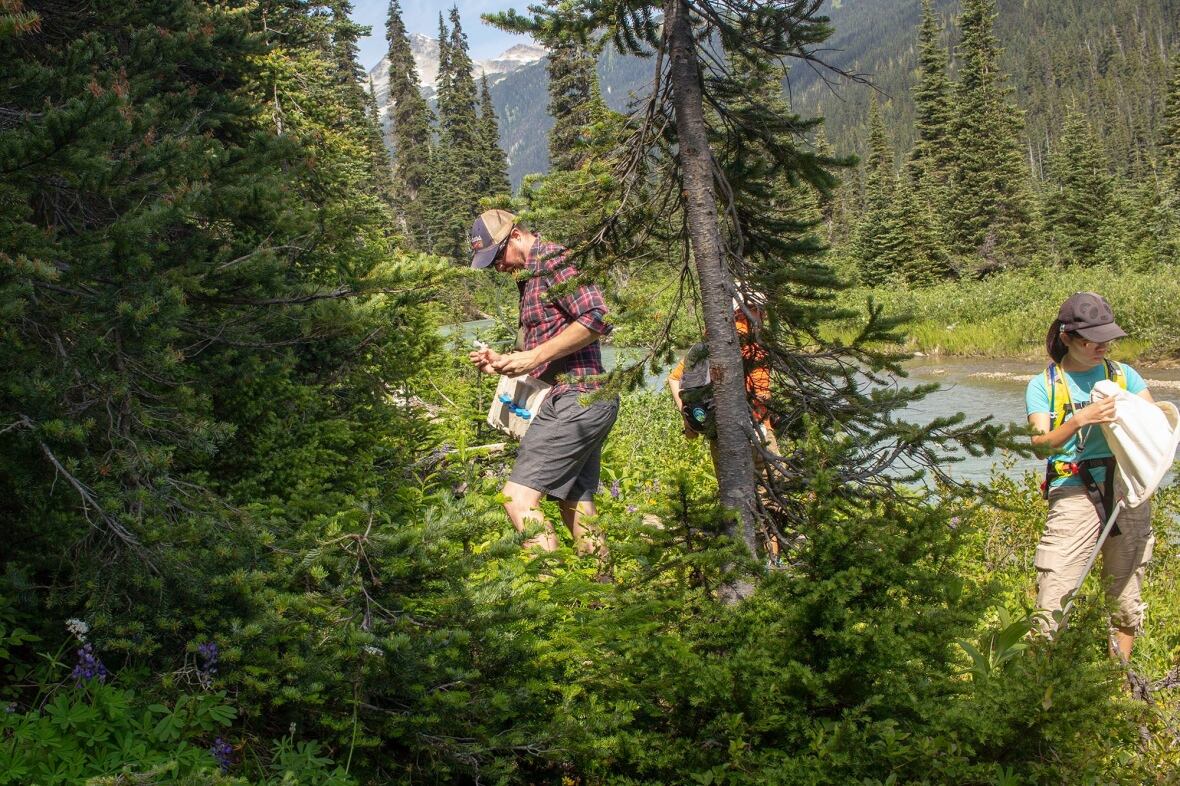
Researchers collect mosquitos in the dense forest of the Yukon. Photo Credit: Dan Peach
One of these snowmelt mosquitoes, Aedes communis, is often found in treed areas and it is a known vector (an agent that carries and transmits a disease) for snowshoe hare virus. While this is a bummer for snowshoe hares, it isn’t a problem for humans unless we get a huge dose of it and even then, it just presents as flu-like symptoms.
Culex tarsalis may be less common in the Yukon than A.communis, but as far as mosquitoes goes, it’s much more intimidating. Known as the “Western Encephalitis Mosquito” and “the mother of all vectors”, it’s a known vector for West Nile virus, several forms of encephalitis, and a long list of other diseases. For those not in the know, encephalitis is a swelling of the brain often caused by a viral infection and has symptoms ranging from aches and fatigue to hallucinations and seizures. It’s not great.

Close up of Culex tarsalis, a species of mosquito that Dr. Dan Peach was the first to confirm is found in Yukon. Photo Credit: Daniel Peach/Journal of the Entomological Society of British Columbia).
But fear not, citizen! While we have mosquitoes in the Yukon that could transmit diseases to people, they don’t and here’s why: In order for mosquito to give you a virus, it needs to be carrying that virus in the first place. Even if the mosquito was carrying a transmittable virus, the virus needs heat to multiply itself enough to the point where it would be too much for the human immune system to deal with. What do we not have in the Yukon? Heat. On the whole, the Yukon is just too chilly for mosquito-born disease to exist let alone thrive. I hope this gives you a feeling of relief as you bask in our -40 C winters.
You see, mosquitoes are diverse in their diets, behaviours, and characteristics, which just helps highlight the fact that the Yukon is wonderfully rich in biodiversity. This is something we should all appreciate even if it applies to insects that sometimes siphon your blood.

Joelle Ingram
Human of Many Talents
Joelle is a former archaeologist, former wildlife interpreter, and a full-time random fact enthusiast. She received her master’s degree in anthropology from McMaster University. One of the four people who read her thesis gave it the glowing review “It’s a paper that would appeal to very specific group of people,” which is probably why only four people have read it. Her favourite land mammal is a muskox, her favourite aquatic mammal is a narwhal. She thinks it’s important that you know that.


That was fun to learn a lot more about mosquitoes.
Mosquitoes like flower nectar. Excellent news
I’m glad you had a good time! Yes, it’s a bummer that these wee bugs give us itchy bites but you’ve gotta respect a pollinator (at least a little bit).
A witty and wonderful article Joelle! There are some very interesting facts that I didn’t know. It does provide a new perspective on mosquitoes.
Thank you very much, Lauren! I’m glad you enjoyed the article and learned a few new things. My favourite part about writing these articles is they’re generally on topics I know little to nothing about so these closer looks are very eye opening for me as well!